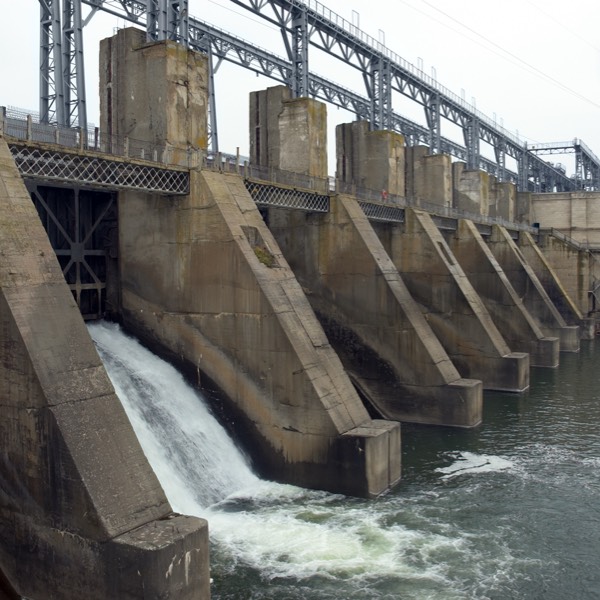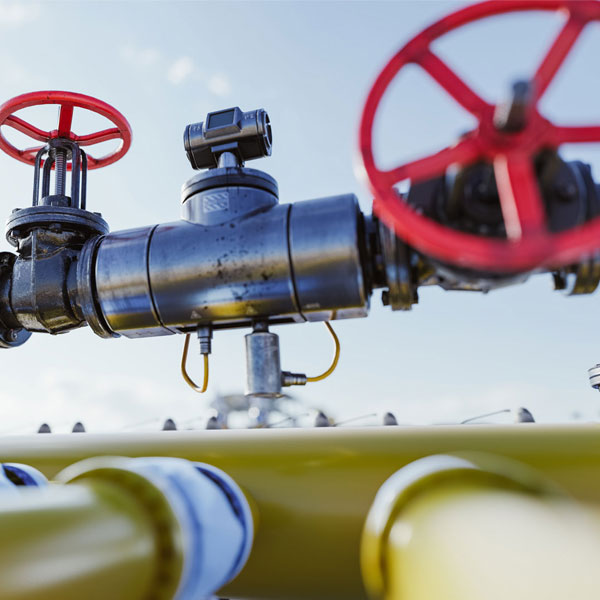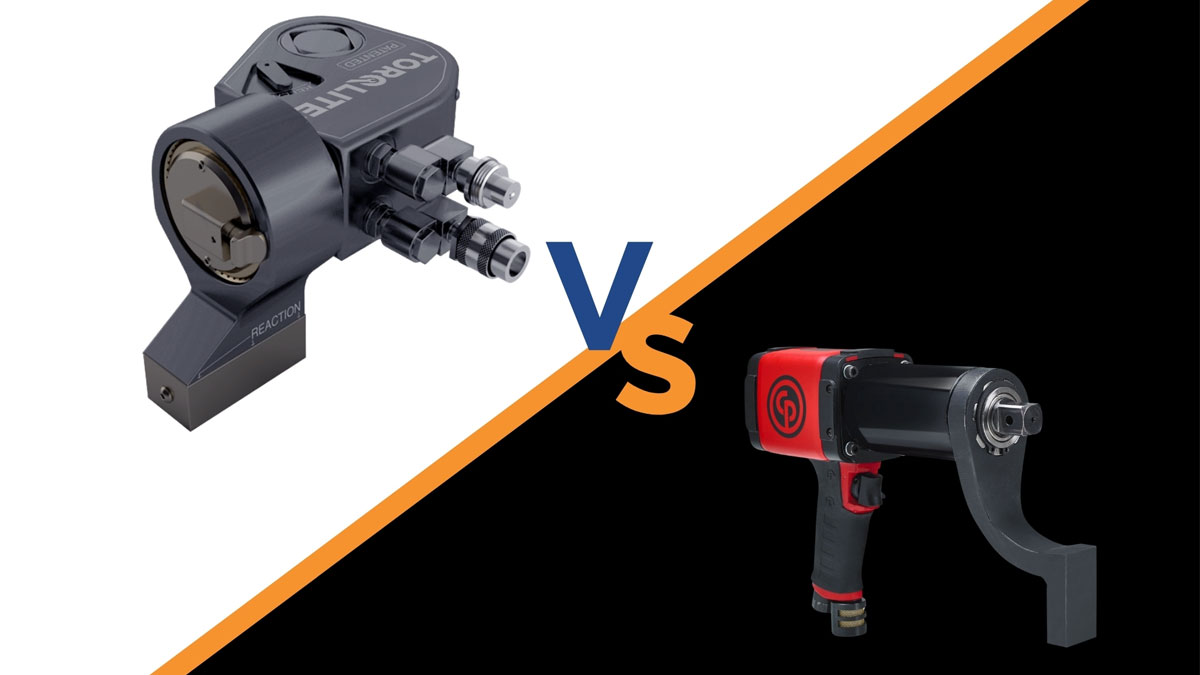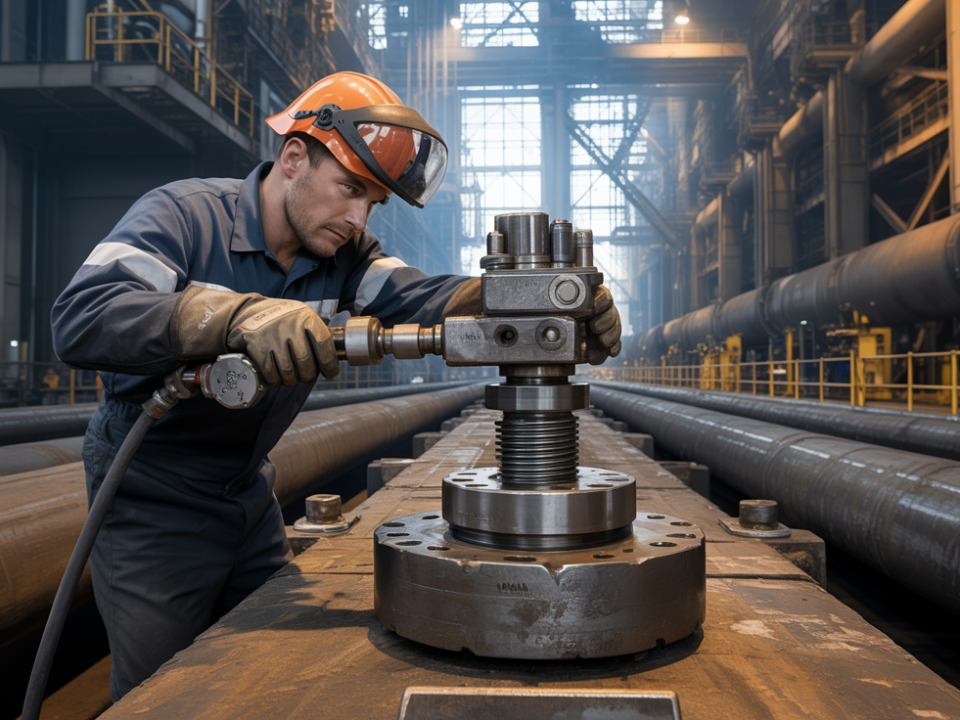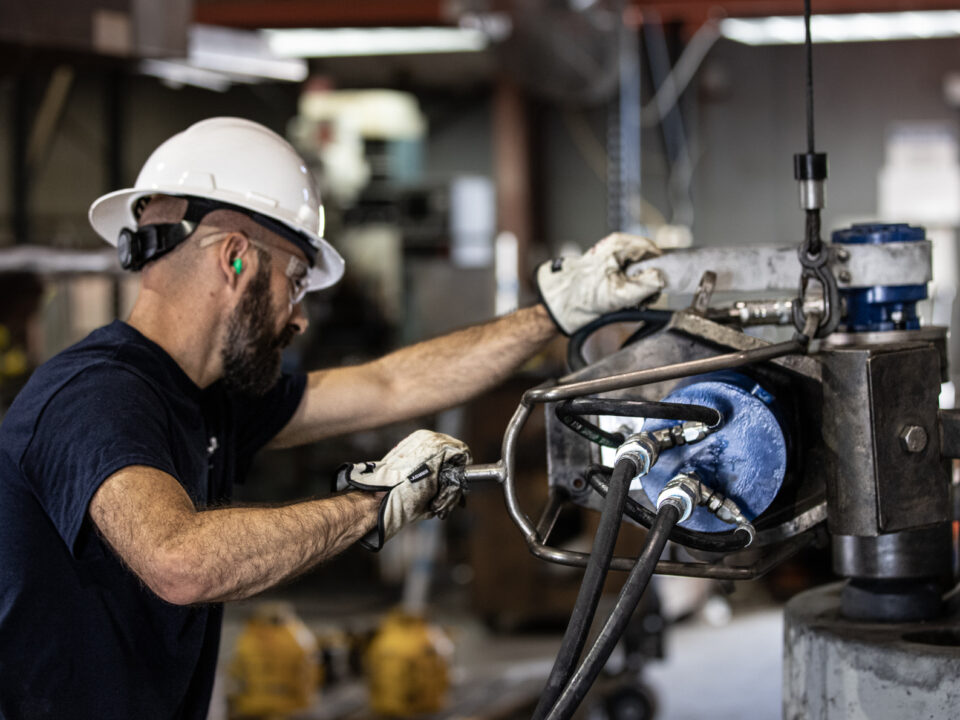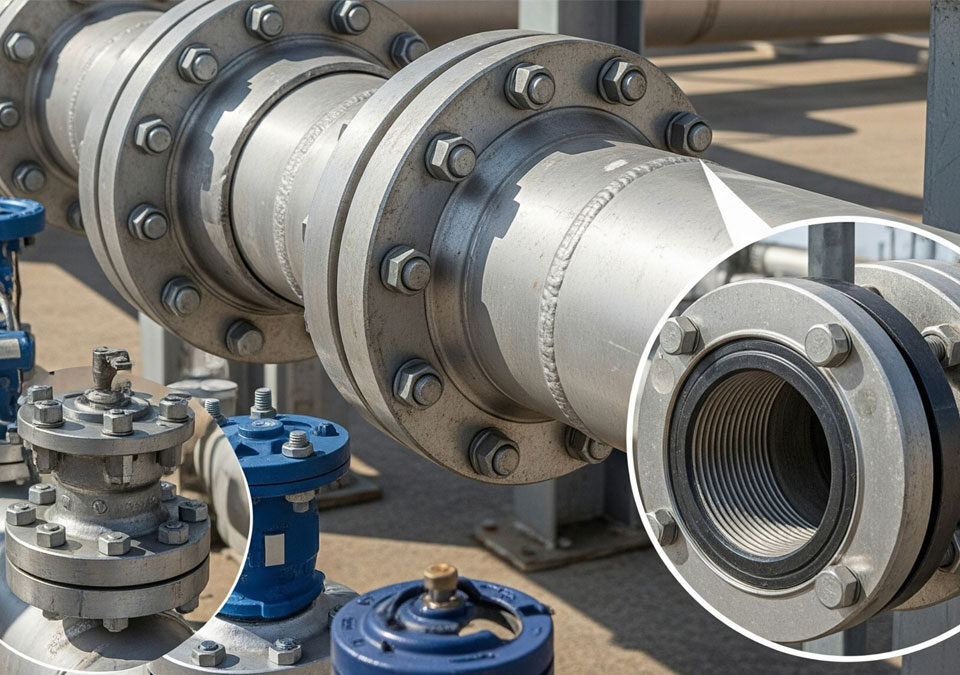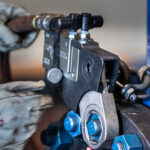
TorqLite: Delivering Precision Bolting Tool Solutions for Over 40 Years
June 17, 2025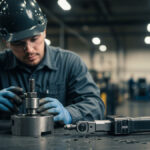
The Hidden Costs of Delayed Torque Tool Calibration
August 18, 2025A seasoned technician knows that having a reliable torque screwdriver and screwdriver on hand is non-negotiable in the fields of electronics and manufacturing. A sturdy socket wrench becomes indispensable when tackling complex nut and bolt assemblies, especially when they’re tightened onto flanges for stability. Here at TorqLite we understand the importance of these points.
Larger equipment often incorporates hydraulics, utilizing a piston to deliver controlled movement and pressure. The choice between steel or alloy parts can impact long-term performance, particularly when force multipliers like an impact wrench or a torque multiplier come into play. Even compact tools like a hex key prove essential when adjusting precision gear systems. Selecting the right power tool often means the difference between a perfect fit and a costly mistake.
Proper use of a lever provides mechanical advantage without overexertion. Managing a well-documented inventory ensures technicians always have the necessary parts and tools at their fingertips. Let’s take a deeper dive into two of these tools: Pneumatic and Hydraulic Torque Wrenches.
1. What Are the Fundamental Differences Between Pneumatic and Hydraulic Torque Wrenches?
The fundamental differences between pneumatic and hydraulic torque wrenches lie in their power sources and operational efficiencies. Pneumatic wrenches rely on compressed air to produce torque, making them ideal for rapid cycle applications, while hydraulic torque wrenches use pressurized fluid systems to generate higher torque outputs with greater precision. According to a 2021 study by the Journal of Industrial Engineering, hydraulic systems provide up to 30% higher torque accuracy in critical applications.
While pneumatic torque wrenches are often seen in high-volume production lines, hydraulic versions are preferred when maximum torque and control are needed, such as in engine assembly or installing heavy-duty fasteners on large machinery. It’s also important to consider the power-to-weight ratio, a key metric in this space. Hydraulic torque wrenches offer the best power-to-weight ratio of any torquing tool, delivering high output with less bulk compared to other options.
In terms of precision, pneumatic torque multipliers typically have an accuracy of ±5% and repeatability between 2–3%. Hydraulic torque wrenches outperform them with an accuracy of ±3% and repeatability of 1%. Repeatability is critical for ensuring that each nut or bolt receives consistent torque—a factor just as important as accuracy in many industrial applications.
Industry experts note that while pneumatic wrenches excel in speed, hydraulic systems reduce operator fatigue by providing a smoother torque curve and improved stability during usage.
2. How Are Performance Metrics for Torque Wrenches Analyzed and Compared?
Performance metrics for torque wrenches are typically analyzed by examining torque accuracy, repeatability, and cycle speed. Hydraulic torque wrenches generally demonstrate a higher torque generation capacity compared to pneumatic models. This evaluation is supported by research from the International Journal of Mechanical Systems (2020), which quantified that hydraulic systems perform consistently under high-load conditions.
Repeatability measurements indicate that hydraulic tools offer steady performance throughout extended use, particularly in applications where fluctuations could compromise fastener integrity. In contrast, pneumatic wrenches are advantageous in scenarios where high-speed operation is essential.
To better understand these differences, the table below offers a comparative overview of key performance metrics for both wrench types.
Performance Comparison Table
| Metric | Pneumatic Torque Wrench | Hydraulic Torque Wrench |
| Torque Accuracy | ±4-5% | ±2-3% |
| Repeatability | 2-3% | 1% |
| Cyclic Rate | High (fast actuation) | Moderate (more controlled) |
| Operational Consistency | Good under variable pressure | Excellent under controlled hydraulic pressure |
This table underscores that while pneumatic wrenches are optimal for faster cycles and lower torque requirements, hydraulic systems are superior in handling higher torque and ensuring precise consistency.
3. What Safety Considerations Should Be Taken When Using Torque Wrenches?
Safety considerations for using torque wrenches include proper pressure regulation, routine maintenance checks, and adherence to manufacturer safety protocols. Hydraulic torque wrenches require careful monitoring of fluid leakage and precise control to avoid over-torqueing, while pneumatic models demand secure ventilation and protection against compressed air hazards. A 2019 safety review by the Occupational Safety and Health Administration (OSHA) emphasizes that regular calibration and user training can reduce accident rates by up to 25%.
Both types require that operators wear appropriate personal protective equipment (PPE) and strictly follow operating manuals. For instance, ensuring that relief valves are correctly adjusted minimizes sudden pressure spikes in hydraulic systems, and routine examination of air lines in pneumatic systems prevents hose bursts.
In addition, industry best practices recommend periodic audits of tool maintenance logs and safety inspections, fostering a workplace culture that prioritizes operator well-being.
4. When Are Pneumatic and Hydraulic Torque Wrenches Best Used?
Pneumatic torque wrenches are best used in high-volume production settings where speed and efficiency are critical, whereas hydraulic torque wrenches are indispensable in high-torque applications requiring precision. For example, in automotive assembly lines where numerous fasteners are tightened rapidly, pneumatic wrenches offer the advantage of quick actuation. Conversely, hydraulic systems are preferred for heavy machinery installation and engine assembly, where accurate torque control can significantly affect performance and safety.
Field engineers recommend the use of pneumatic tools for tasks such as assembling light to medium equipment, whereas hydraulic torque multipliers are employed in scenarios where fastener integrity is paramount. Real-world case studies in manufacturing plants have shown that using the correct tool type according to application demands can improve overall assembly quality by 20%.
Additionally, the choice often depends on environmental and spatial factors. Pneumatic torque multipliers tend to be bulkier compared to their hydraulic counterparts at similar torque levels, so having adequate clearance around each nut or bolt is essential. Pneumatic tools also perform well in cool, dry conditions, while hydraulic systems are engineered to operate reliably across varying temperatures and humidity levels.
5. How Do Maintenance Requirements Differ for Pneumatic and Hydraulic Wrenches?
Maintenance requirements differ between pneumatic and hydraulic torque wrenches primarily due to the different operating fluids and internal components. Pneumatic torque multipliers require routine inspection of air filters, seals, and hose integrity to prevent air leaks and maintain consistent pressure. In addition, it’s essential to check the mini planetary gears inside the annulus of the tool. These gears create the torque multiplication factor (ranging from 4:1 to 50:1) enabling high output from low input force.
Hydraulic torque wrenches necessitate periodic hydraulic fluid replacement, system pressure checks, and seal integrity assessments to ensure precise torque delivery and tool longevity.
Research from the Journal of Machinery Maintenance (2022) indicates that scheduled maintenance on hydraulic torque tools can extend their operational lifespan by up to 40% compared to systems maintained on an ad hoc basis. Preventative maintenance, including calibration every 500 operating hours, guarantees optimal performance and reduces downtime in both tool types.
Manufacturers provide detailed maintenance protocols that must be followed meticulously, and many operators integrate digital monitoring systems to track tool usage and schedule timely servicing.
6. What Innovations Are Shaping the Future of Torque Wrench Technology?
Innovations in torque wrench technology are focused on integrating digital controls, enhanced sensor accuracy, and smart diagnostics to provide real-time performance feedback and predictive maintenance. Newer hydraulic torque wrenches now incorporate wireless data transmission and app-based monitoring, which allow users to calibrate and document torque settings with unprecedented precision.
Furthermore, advancements such as integrated pressure sensors, Bluetooth connectivity, and automated diagnostic alerts are diminishing operator fatigue and increasing overall safety. These smart-systems enable maintenance teams to adjust operating parameters remotely and schedule preventive servicing based on usage data.
As the industrial sector increasingly demands higher performance and reliability, such technological innovations are expected to set new standards for safety and efficiency in torque application.
Pneumatic vs. Hydraulic Final Thoughts
In the world of manufacturing and electronics, precision is everything. Whether you’re using a torque screwdriver or a simple screwdriver, the right power tool makes all the difference. A socket wrench becomes essential for tightening a nut and bolt to spec, while understanding hydraulics can help with heavy-duty applications involving a piston. Materials like steel and alloy ensure durability even under extreme conditions.
For particularly stubborn fasteners, a torque multiplier or an impact wrench can generate the necessary force without damaging parts. Small tools like a hex key are just as critical when assembling components with delicate gear systems. In large machinery, the right lever length ensures proper application of force, especially when working around a flange. Keeping an organized inventory of tools and materials ensures efficiency and avoids costly delays during assembly.
FAQs
Are power torque tools good?
Yes, power torque tools are highly effective for tasks requiring precise and consistent force. They help speed up work, reduce user fatigue, and improve accuracy compared to manual tools.
Are torque wrenches accurate?
Torque wrenches are generally very accurate when properly calibrated. They are specifically designed to apply a precise amount of torque, which helps prevent damage or under-tightening.
Are torque wrenches worth it?
Torque wrenches are definitely worth the investment, especially for critical applications like automotive or mechanical work where proper bolt tension is crucial for safety and performance.
Can a torque wrench go bad?
Yes, torque wrenches can lose calibration over time or get damaged from misuse. Regular maintenance and calibration checks are essential to ensure long-term reliability and accuracy.
Do torque wrenches use regular sockets?
Hydraulic torque wrenches with square drives require industrial-grade impact sockets, not standard ones. These tools typically use larger drive sizes, such as 3/4”, 1”, 1-1/2”, and 2-1/2”, to handle high torque loads. Additionally, low-profile hydraulic wrenches do not use sockets at all; instead, they operate with interchangeable hex heads or cassettes designed for tight-clearance applications.
Do torque wrenches work both ways?
Some torque wrenches work both clockwise and counterclockwise, but not all. It’s important to check the specifications because many wrenches are only calibrated for clockwise use.
How does a hydraulic torque wrench work?
A hydraulic torque wrench uses pressurized hydraulic fluid to generate high torque with minimal effort. It delivers consistent, powerful force, ideal for heavy-duty bolting applications.
How to set a hydraulic torque wrench?
To set a hydraulic torque wrench, you must first adjust the pump pressure according to a torque chart. Then, confirm settings and connect the hose and tool securely.
How to use a hydraulic torque wrench?
Using a hydraulic torque wrench involves connecting it to a hydraulic pump, setting the desired pressure, positioning the wrench on the fastener, and operating it carefully until tightened.
What is a hydraulic torque wrench?
A hydraulic torque wrench is a specialized tool powered by hydraulic pressure, designed to apply precise and extremely high torque to fasteners, especially in industrial settings.
What are hydraulic torque wrenches used for?
Hydraulic torque wrenches are used for tightening or loosening large, heavy-duty bolts in industries like construction, oil and gas, manufacturing, and heavy equipment maintenance.
Are pneumatic tools better than electric?
Pneumatic tools can be better than electric ones for certain jobs because they often offer more power, are lighter, and don’t overheat easily. However, they require an air compressor.






















